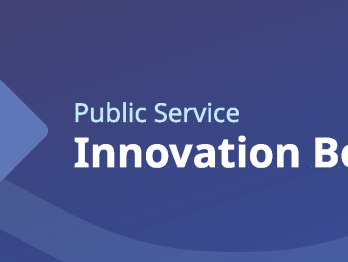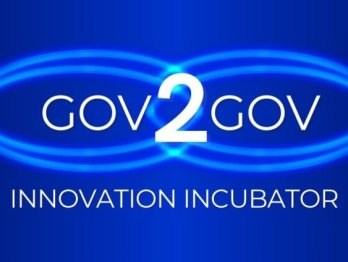A prototype tool for exploring your innovation portfolio

OPSI is researching innovation portfolios as part of our European Commission Horizon 2020 work and we are developing a self-guided portfolio assessment tool for people to analyse and explore their own organisational innovation portfolio. We welcome your feedback.
Hero-innovators are imaginary
Does your organisations still believe in hero-innovators? Probably not. Based on our research and observations, in order for innovation to be impactful, organisations need a lot of distributed heroism. Does your organisation still believe that a programme or initiative is going to solve all the organisations’ challenges? Here things get a bit trickier. We still tend to believe in the magic bullet, the all-impactful vehicle of change: if you are making an innovation programme or project, should it not be perfect? The world of commercial product innovation has trained us to believe that myth. Unfortunately, the real and messy world of innovation does not work like that.
Many approaches for an uncertain world
Organisations need a lot of different approaches and initiatives to make things impactful. ARPANET did not become Internet overnight—not even close.[1] There were a lot of initiatives and failures that eventually lead to the adopted network of networks. One could argue that there was a global innovation portfolio that made the internet into what we know and use every day (in current circumstances more than ever!). An innovation portfolio approach assumes that in the long term relying on single, hero innovations is as fallible as putting all our bets on hero innovators. True innovative change requires multitude of activities, a support ecosystem that facilitates change.
Having a lot of different approaches and initiatives also improves the options available for when organisations and systems experience drastic shifts. For instance, at an operational level, governments that had previously invested in digital infrastructure, support systems, and human resources staff and policies to allow teleworking were better prepared to make an entire organisational shift recently. On a larger scale, early experiments with Universal Basic Income created a proof of concept for others who are now considering its use as a more widespread policy option. Portfolios exist whether they are intentional or not. Knowing quickly which options are available can help organisations respond to shifts and anticipate the next ones. Moreover, there may be many good – and sometimes highly synergistic – roads to success. To succeed in 21st century missions (e.g., creating a plastic-free ocean or carbon neutral cities) requires us to crowd-in many simultaneous innovations from the public, private and third sectors. It takes a portfolio of action.
What is innovation portfolio management?
It essentially is an innovation sense-making activity that connects your (and sometimes your partners’) innovation practise – specific projects, initiatives and programmes – to the intent and purpose behind those activities as well as the strategic goal of the organisation. It should connect problem framing to operations and continuous learning; and allow and organisation to sufficiently resource and support innovation towards defined aims. Effective innovation portfolio management does not only look at the composition of the portfolio (list of innovation projects, initiatives, or investments) and problems that they connect to, but it analyses what in the system and the organisational structures allows an innovation portfolio to be successful in the long term.
There is a lot of good practice to learn from that has been demonstrated by SITRA’s recent work in the area bringing together different innovation portfolio practitioners. Most innovation portfolios tend to be connected to specific problems. For example, see the methodologies behind the EIT’s Climate KIC deep demonstration projects or the work that the United Nations Development Programme (UNDP) is doing in the context of Sustainable Development Goals (SDGs) in their accelerator labs. But it does not always have to be like that.
Think of a traditional innovation funnel: there can be both quick wins, big systemic change goals, but also projects in early development, in basic research phase with decidedly “fuzzy front ends.” It is important to recognise that our innovation portfolios can serve different ends and time horizons. Sometimes we may need to separate and shield part of our innovation portfolios because our organisational structures (e.g., how we resource, account for, or evaluate innovation) tend to bias certain types of projects in our portfolio. For example, a very mission-driven organisation may become “locked in,” and blind to new developments that challenge the area of work. An effective and intentional innovation portfolio will prepare for these developments, regardless of their momentary alignment with the organisation’s main purpose.
A more distributed portfolio management capability
Over the past year, OPSI has been researching innovation portfolios and learning from an international set of examples on how organisations approach innovation portfolio management. Based on our innovation facet model, we developed a modular workshop to explore organisational innovation portfolios and uncover the support structures (policies, budgets, etc.) that tend to shape those portfolios in different directions. We also advised organisations (see here, here) on how to re-shape those support structures in new directions and level up their innovation portfolio management capabilities. Based on the patterns and insights we discovered through those practical experiences with real-world example portfolios, we are re-thinking our theory. While the demand and need for innovation portfolio exploration and management is great, our small team cannot possibly support all of the demand. The current situation is also the perfect time for us to consider a self-service, virtual tool for distributed innovation portfolio exploration. As part of our European Commission Horizon 2020 work, we are developing a portfolio assessment tool for individuals and organisations to explore and analyse their own innovation portfolios and their portfolio management capabilities.
How to get involved
If you would like to learn more about innovation portfolio management, from us as well as from peers with extensive innovation portfolio experience, please join us for a webinar on 27 May at 10:00 Central European Time. Register here.
If you have 20-30 minutes and would like to test out some of the questions connected to our initial portfolio assessment tool prototype and provide us with feedback, please do so here. Your feedback will inform the future development of the tool.
This is very much a work in progress and if you have thoughts about this topic or project, please feel free to get in touch: [email protected]
[1] Take a look at Salus and Foreword By-Cerf (1995) book “Casting the Net: From ARPANET to Internet and Beyond…”









